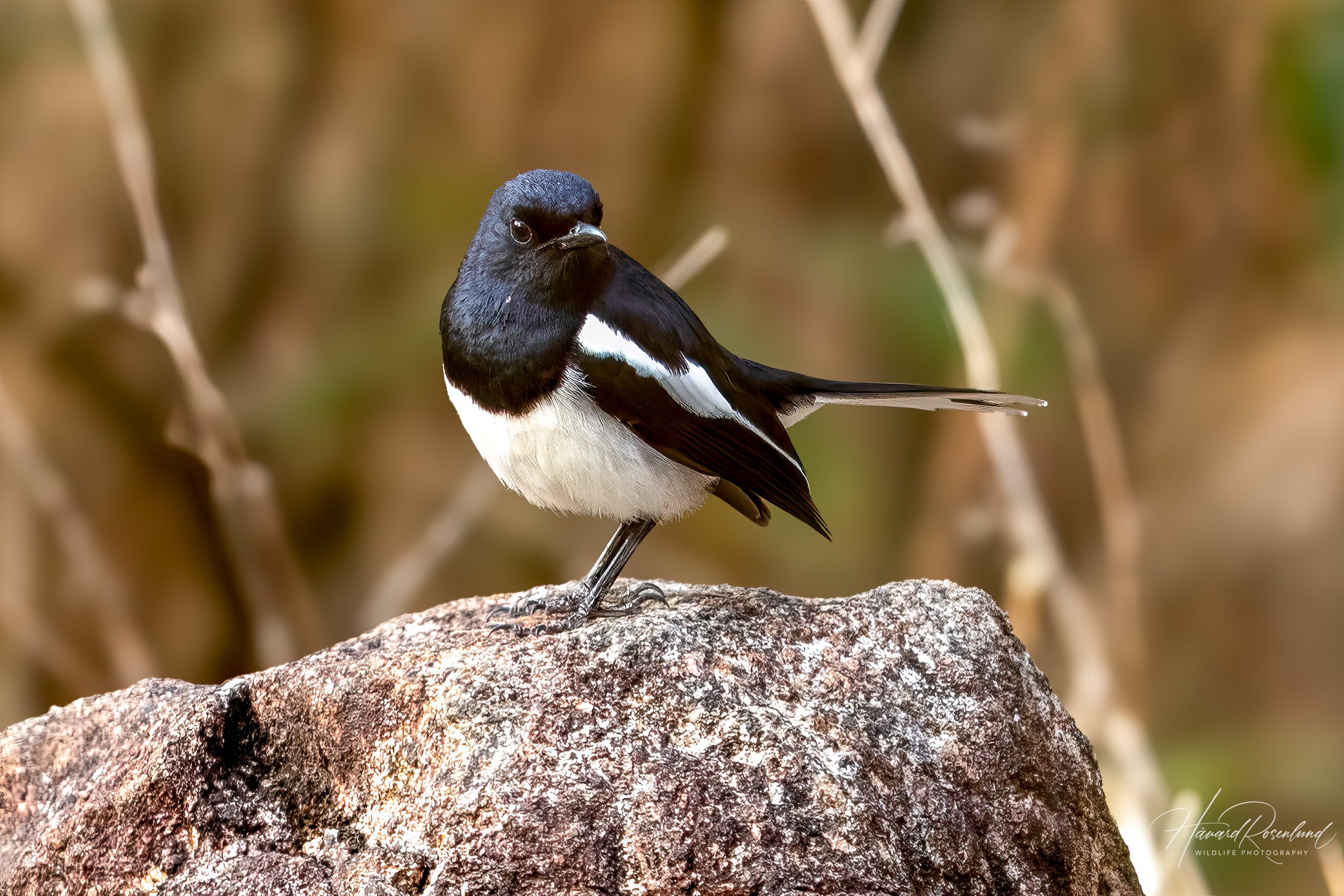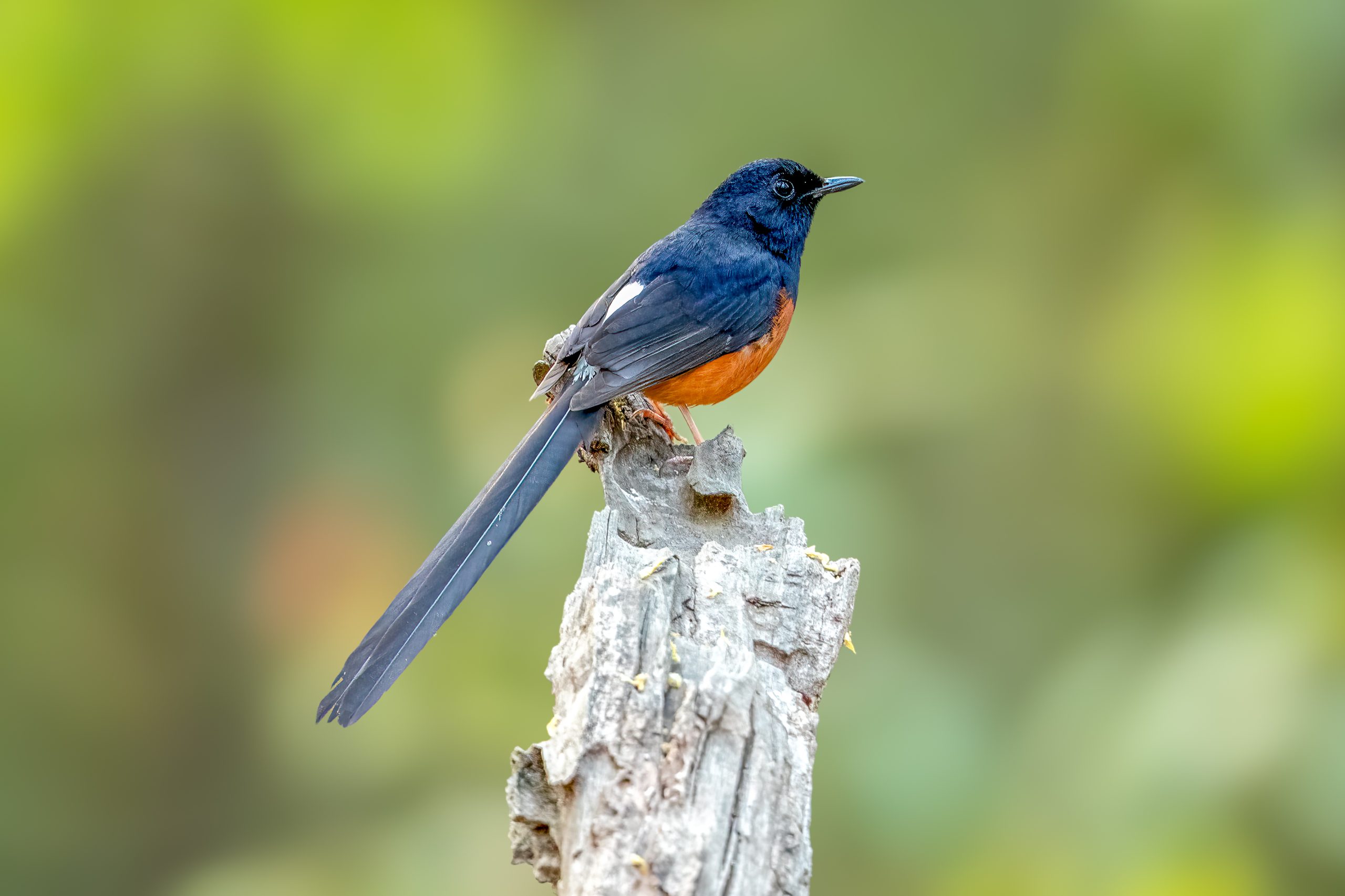Oriental Magpie-Robin
(Copsychus saularis)
Description
The Oriental magpie-robin (Copsychus saularis) is a small passerine bird widely distributed across South and Southeast Asia. It measures around 19-21 cm (7.5-8.3 in) in length, with males typically sporting a glossy black and white plumage, while females and juveniles have a duller grey and white coloration. One of its distinctive features is the white wing patch visible in both sexes. It can be distinguished from similar species within its range, such as the Indian robin (Copsychus fulicatus), by its contrasting black upperparts and white underparts. The Oriental magpie-robin is known for its varied and complex vocalizations. It is adept at mimicking the calls of other birds and even some mechanical sounds.
Diet & habitat
Oriental magpie-robins are versatile in their habitat preferences, commonly found in open woodlands, gardens, and urban areas. They are insectivorous, primarily feeding on insects, but they also consume other small invertebrates and occasionally fruits and seeds. These birds are known for their foraging behavior, often seen hopping on the ground or flitting through foliage in search of prey.
Nesting
Breeding season for the Oriental magpie-robin generally spans from March to July. During this period, males sing vigorously to attract females and defend their territory. The species is known for its monogamous pair bonds. Females construct the nest, usually in tree hollows, crevices, or man-made structures. The nest is a cup-shaped structure made of twigs, leaves, and grass. Clutch size ranges from 3 to 5 eggs, which are incubated by the female for about 8-14 days. Both parents participate in feeding the chicks, which fledge approximately 13-15 days after hatching.
Status
The Oriental magpie-robin is listed as least concern on the IUCN Red List. Despite being widespread and common in many parts of its range, the species faces threats from habitat destruction and fragmentation, particularly due to urban development. Additionally, illegal trapping and trade pose significant threats in some regions.








